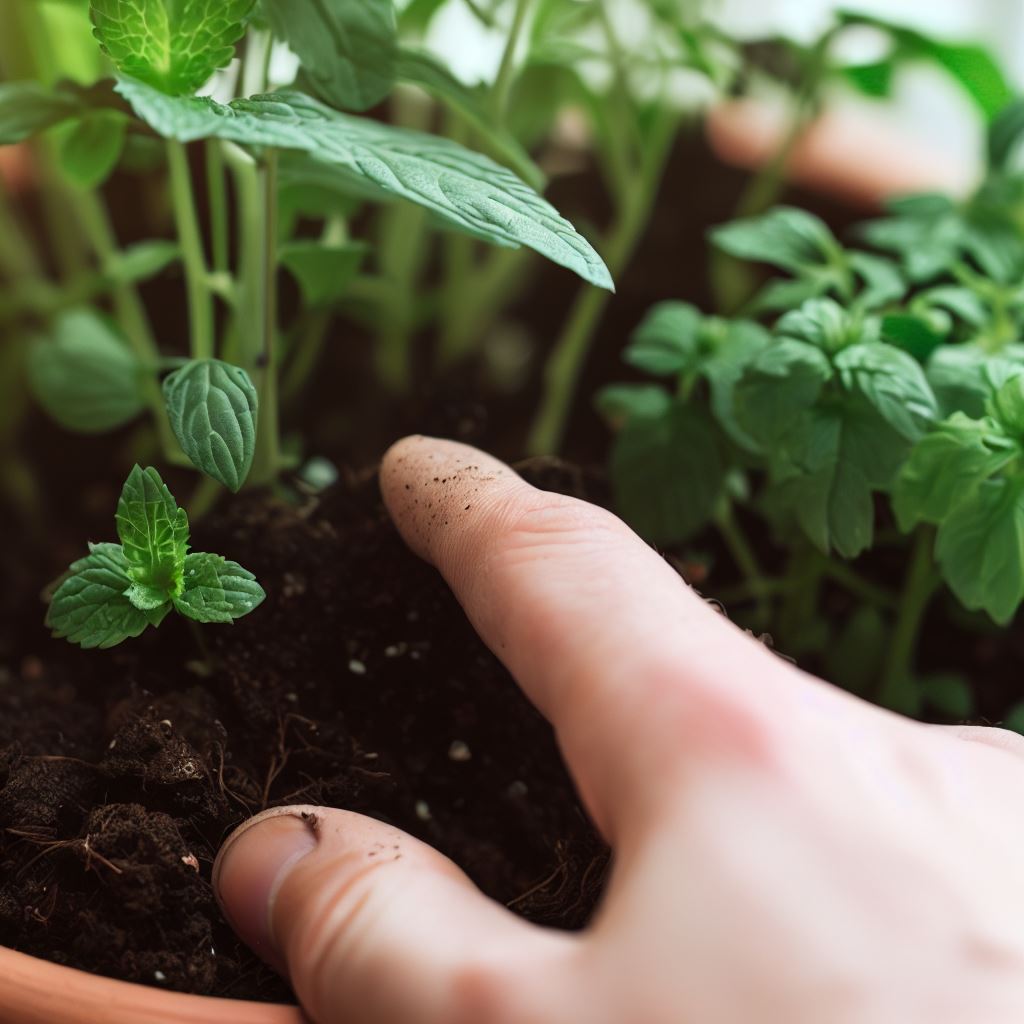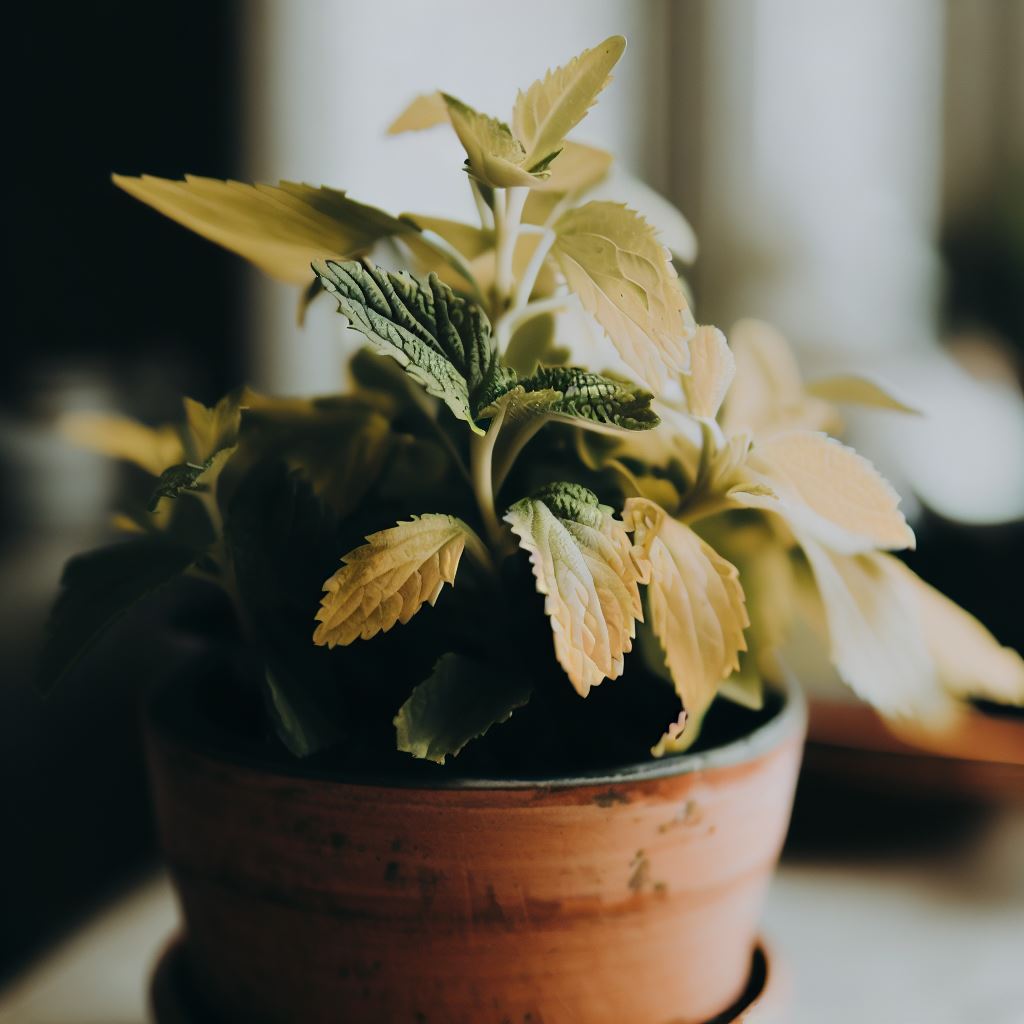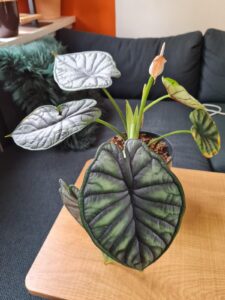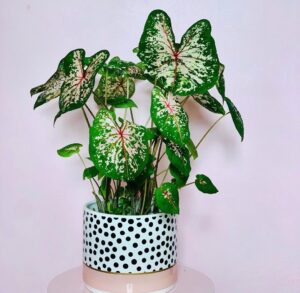
As an avid gardener, I’ve had my fair share of plant problems over the years. Just last month, I noticed that my indoor herb garden was looking a little worse for wear. The basil seemed droopy, the parsley had yellowing leaves, and I swear I saw a small bug crawling on my cilantro. It got me thinking – what am I doing wrong with my herb garden?
In this article, I’ll go over some of the most common issues indoor herb gardeners face and how to identify and fix them.
By understanding the signs of unhealthy plants and learning how to diagnose potential problems, you’ll be able to give your herbs the care they need to thrive.
In this article
- 1 How do I know if I have houseplant problems?
- 2 5 Signs of Unhealthy Indoor Herbs
- 3 Why are my plants droopy?
- 4 Why are my plant leaves yellow?
- 5 What should I do if it looks like my plant leaves are bitten by bugs?
- 6 How do you know if a plant is being over or under-watered?
- 7 How do you know if your plant is not getting enough light?
- 8 How do you fix yellow and brown leaves on plants?
- 9 How can I find out what’s wrong with my plant?
- 10 Can I save a plant that looks like it hasn’t been watered in a while?
- 11 Here are some common problems with indoor herb gardens and how to address them:
How do I know if I have houseplant problems?
The first step is observating your plants closely on a regular basis. Healthy herbs should have vibrant green leaves, firm stems, and no signs of wilting, discoloration, or pests. Take a walk around your garden and check:
- Are the leaves a dull or yellowed color rather than bright green?
- Do stems or leaves appear limp or droopy rather than upright?
- Do you see any spots, holes, or marks on the foliage?
- Are the leaves unusually small or distorted in shape?
- Do you notice any bugs crawling on the soil or leaves?
Paying attention to even subtle changes in your plant’s appearance can help you identify potential problems early before they get out of hand. It’s also a good idea to check the soil moisture level by sticking your finger an inch into the soil.
5 Signs of Unhealthy Indoor Herbs
Here are some of the most common signs that something may be wrong with your indoor herb garden:
Drooping leaves or stems
Plants that appear wilted even when the soil is moist could be underwatered. Wilting is a sign of moisture stress.
Yellow or pale leaves
Yellowed leaves usually indicate a nutrient deficiency. The specific nutrient (nitrogen, iron, etc.) can vary depending on the location and severity of the yellowing.
Brown or dead spots on leaves
Brown or dead spots could be a result of too much or too little water, extreme temperatures, or pest/disease issues like fungal or bacterial leaf spot.
Small, distorted leaves
Stunted or deformed foliage may be caused by insufficient light, over/under watering, or herb-specific pests like aphids.
Holes or notches in leaves
Holes or notches could mean your herbs are being eaten by insects like spider mites or caterpillars. Check carefully for tiny pests on leaves and stems.
Being aware of these common red flags can help you pinpoint if and what might be causing issues with your indoor herb garden. From there, you can take steps to diagnose and remedy the problem.
Why are my plants droopy?
One of the main culprits for drooping plants is under-watering. Herbs need soil to be kept consistently moist, not soggy wet or bone dry. The number one tip is to check the soil regularly with your finger – if the top inch feels dry, it’s time to water.
Drooping can also be caused by:
- Low humidity: Many herbs prefer moderate to high humidity levels. A pebble tray under plants or humidifier can help.
- Overwatering: Soggy soil deprives roots of oxygen and causes wilting. Ensure container has drainage holes and soil dries slightly between waterings.
- Inconsistent temperatures: Drafty areas or vents from heat/AC can cause moisture stress. Maintain stable room temps.
- Pests: Check thoroughly for signs of aphids, spider mites, or other bugs which sap plant vigor.
It’s important to determine the root cause so you can address drooping properly by changing your watering habits or environment as needed. Prompt action can save wilting herbs.
Why are my plant leaves yellow?
Plants losing their green color is usually a sign of nutritional deficiency. Here are some common reasons for yellowing leaves on herbs:
- Nitrogen deficiency: Nitrogen is key for lush green growth. Signs are pale leaves starting from the bottom up. Add fertilizer or compost.
- Iron deficiency: Seen as yellow leaves with green veins. Iron becomes unavailable in alkaline soils. Try chelated iron supplements.
- Overwatering: Too much water dilutes nutrients in soil and causes foliage to yellow. Improve drainage and water less.
- Inappropriate nutrients: Some fertilizers lack nutrients specific to herbs’ needs. Use an all-purpose or herb formula.
- Not enough light: Yellowing leaves and stem elongation means plants are light-starved. Move to a sunnier spot.
Check pH levels, watering habits, and lighting conditions first before assuming a nutrient issue. Supplementing without fixing the root cause won’t solve the problem in the long run.
What should I do if it looks like my plant leaves are bitten by bugs?
If you spot holes, notches, silk webbing, or tiny moving insects on leaves and stems, it’s likely a pest issue. Common herb garden bugs include:
- Aphids: Soft-bodied, pear-shaped insects that suck plant juices.
- Spider mites: Microscopic and spin fine webbing. Leaves may appear dusty or yellow.
- Caterpillars: Hairy larvae that chew large irregular holes in foliage.
- Mealybugs: Fluffy masses that secrete honeydew and weaken plants.
First carefully check the whole plant with a magnifying glass. Isolate infected plants if possible. For minor infestations, try wiping aphids and pests off with a cotton ball dipped in alcohol. You can also release predatory insects like ladybugs or lacewings to control aphids naturally. As a last resort, apply neem or insecticidal soap as directed. Preventing pests begins with monitoring plant health and conditions to keep herbs vigorous.
How do you know if a plant is being over or under-watered?
Two of the most common issues for indoor herb gardens are overwatering and underwatering. It takes some experience to gauge your plants’ individual water needs. Here are some signs:
Underwatering:
- Wilted, droopy leaves and stems even when soil is lightly moist
- Leaves may start to yellow or brown at the edges
Overwatering:
- Soggy, saturated soil that takes a long time to dry out
- Yellow, brown leaf spots or leaf drop
- Mushy, brown roots

The feel test is key – stick your finger an inch into the soil. It should be moist but not soaked. Lift pots periodically too to check drainage. Use the appropriate watering frequency for your environment and container size. Allow the top inch to dry between waterings. Proper drainage is also essential to prevent root rot. Adjust habits based on how plants respond over time.
How do you know if your plant is not getting enough light?
Most herbs thrive in locations with bright, indirect sunlight for at least 6 hours daily. Symptoms of insufficient light include:
- Elongated stems with small leaves – plants stretch towards light
- Pale, yellow leaves that may feel thin and weak
- Sparse, leggy growth (stems spaced far apart)
- Slow growth rate or stunted size compared to nursery conditions
Good clues are comparing a plant’s appearance to how it looked when purchased. Pothos houseplants, for example, grow vigorously given bright light. If it looks sad and sparse, it likely needs more sun. Experiment by moving herbs gradually to increasing light levels until growth improves. Seed catalogs often list individual light requirements too. With trial and error, you’ll learn each variety’s preferences.

How do you fix yellow and brown leaves on plants?
When leaves start to yellow, brown, wilt or drop off, it’s a sign something is off balance with your plant’s nutrient intake or environment. Here are steps to remedy common foliage problems:
- Check for pests or diseases causing damage and treat as needed.
- Examine watering habits and improve drainage if signs point to overwatering.
- Test soil pH and adjust if very acidic or alkaline to allow nutrients to be taken up.
- Apply a balanced, water-soluble plant food during the growing season every 2-4 weeks.
- Provide adequate light – move plant if leaves are pale or leggy.
- Cut back severely diseased or damaged foliage to redirect energy into new growth.
- As a last resort, consider repotting into fresh potting mix if soil has become exhausted.
Often a combination of adjusting care factors is needed. Be patient, as fixing underlying issues may take some time for new leaves to form properly. Focus first on resolving any causes before the foliage can recover vibrant color.
How can I find out what’s wrong with my plant?
When symptoms arise, the detective work begins to narrow down the cause. These steps can help troubleshoot unknown herb garden problems:
- Observe closely and document signs – wilt.
- Check growing conditions – insufficient light, water, nutrients.
- Isolate affected plant/s and monitor spread.
- Examine foliage, stems and soil for clues – pests, damage, drainage.
- Research specific plant and common issues it faces.
- Test soil properties if problem persists – pH, nutrients.
- Compare plant appearance at purchase for lighting/care needs.
- Seek input from local nursery staff on narrowing suspects.
- Try pinpoint remedies like fertilizer before concluding a problem.
- As last resort, consult botanist or extension agent with samples.
Being systematic pays off. Start with simple fixes to environment before worrying over serious causes. With experience, patterns help diagnose faster. Don’t be too quick to discard – many plants bounce back with TLC.
Can I save a plant that looks like it hasn’t been watered in a while?
Plants are resilient and often recoverable, even from severe dehydration. With patience and care, a wilted herb garden can often be revived. Here are tips:
- Gently remove from pot and check roots for firmness. Trim any mushy parts away.
- Re-pot in fresh potting mix with good drainage. Water thoroughly until water runs through.
- Place in a humid environment like the bathroom for 12-24 hours to hydrate foliage.
- Gradually introduce to usual light levels to prevent sunburn as it greens up.
- Check moisture daily and avoid letting soil fully dry out initially during recovery.
- Cut any severely desiccated stems or leaves off at the nodes to direct energy.
- Be prepared for some leaf and root loss. New growth should emerge within 1-2 weeks if conditions improve.
- Fertilize monthly with half-strength all-purpose plant food to nourish new growth.
Here are some common problems with indoor herb gardens and how to address them:
- Insufficient light: Herbs require natural light to thrive and cannot grow adequately with regular household lights. If your herbs seem to be wilting, make sure they have enough access to quality natural or artificial light. Placing your herbs near a window or using LED grow lights can help.
- Lack of humidity: The air inside homes and apartments is generally less humid than the outdoors, which can cause herbs to wil¹. Mist your plants once a day with a spray bottle or invest in a humidifier to maintain adequate humidity.
- Temperature hazards: Placing your plants near radiators, stoves, and air vents can lead to dryness and sudden temperature fluctuations, which are not ideal for herb plants¹. Ensure that your herbs are not exposed to such conditions.
- Overwatering: Overwatering is a common mistake that can harm indoor plants, including herbs. Watch for symptoms of overwatering, such as yellowing leaves or root rot. Allow the soil to dry out between waterings and ensure proper drainage.
- Pests and diseases: Herbs are generally resistant to pests due to their essential fragrant oils. However, some herbs may be susceptible to pests or diseases. Keep an eye out for any signs of infestation or disease and take appropriate measures.
Remember that each herb has its own specific requirements, so it’s essential to research the needs of the particular herbs you’re growing. With proper care and attention, you can enjoy a thriving indoor herb garden!
Frequently Asked Questions
I think my herb seedlings are getting too much sun. How can I protect them?
You can try gradually introducing seedlings to direct sun and moving them to a spot with morning sun and afternoon shade. Using a shade cloth over trays of 50% density is also effective.
What common fertilizers do you recommend for indoor herb gardens?
All-purpose liquid houseplant fertilizers like Miracle-Gro or liquid seaweed extracts are gentle and low-salt options suitable for most herbs. Check the N-P-K ratio and use at 1⁄4 strength every 2-4 weeks in the growing season.
How often should I prune my herbs to encourage new growth?
Most kitchen herbs can be pruned regularly to maintain compact size and encourage fresh leaves. Basil, parsley and cilantro thrive with occasional trimming every 2-3 weeks. Woody herbs like rosemary and thyme can be trimmed lightly monthly.
With close observation of your plant’s needs and environment, most common herb garden problems can be prevented or resolved. The first step is familiarizing yourself with signs of pests, deficiencies and moisture stress.
From there, methodically adjusting care factors like lighting, watering and nutrients based on individual plant responses over time. With patience and a little TLC, your indoor herb garden will be flourishing in no time.
References
[1] https://www.gardeningknowhow.com/garden-how-to/info/why-are-my-plants-wilted.htm
[2] https://www.hortculture.com/yellow-leaves-nutritional-deficiencies/
[3] https://www.gardeningknowhow.com/garden-how-to/info/using-iron-fertilizers.htm
[4] https://www.canr.msu.edu/news/release_biological_control_aphids_lady_bugs_lacewings







